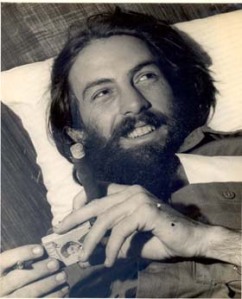Today in Latin America, Camilo Cienfuegos
 Today in 1932 (77 years ago), Cuban revolutionary Camilo Cienfuegos was born in Havana. Even to this day, Cienfuegos proves to be a controversial figure in the history of the Cuban Revolution in 1959.
Today in 1932 (77 years ago), Cuban revolutionary Camilo Cienfuegos was born in Havana. Even to this day, Cienfuegos proves to be a controversial figure in the history of the Cuban Revolution in 1959.
When he was only twenty-three, in 1954, he participated in a demonstration in honor of Cuban folk hero Antonio Maceo. He was attacked by Batista’s guards. He was hit in the leg by a bullet and taken to a local hospital where he was treated. It was there that his fate was sealed:
They carried me to the student clinic where I experienced one of the greatest emotions of my life, when more than a hundred people gathered there in the entrance broke into cheers and applause when they carried me up, and I felt such an emotion, I felt about to cry, and I yelled out, ‘Viva Cuba!’ I was most sure then that, whatever the cost, Cuba had to be free.
After his ordeal, he, like many in the previous generation of freedom fighters in the 1890s (see Jose Martí), he left for Cuba for the United States, in particular, New York City. Events moved him from New York to Mexico, where fate would place him and Fidel Castro together as he planned his assault on Batista’s Cuba. He was on of the few on the Granma as it sailed off on November 1956.
Cienfuegos did not come to Cuba as an experienced guerrilla fighter (legend has it that he was only allowed on the full Granma because of his thinness), but rose to become a disciplined warrior in the Che Guevara vain. He’d eventually rise to the rank of Comandante and captain a point platoon, one of the most dangerous positions during the war. As the war culminated in the eventual rebel victory, Cienfuegos, Guevara and Jamie Vega each manned separate columns across the country. In December of 1958, Cienfuegos’ column fought a garrison in Yaguajay. He became known as the “Hero of Yaguajay,” then moved onto Santa Clara on December 31. Batista surrendered the following day. This year, we celebrate the 50th anniversary of the victory.
On October 28, 1959, Camilo took a Cessna plane from Camagüey to Havana where he disappeared. Fidel, Raúl and Che all participated in search missions for Cienfuegos. He was presumed lost by the end of November and neither his plane nor remains have been found to this day. (Every year on Oct. 28, children throw flowers into the sea in remembrance of Cienfuegos – “a flower for Camilo”).
Camilo was always described as incredibly charismatic and easy-going, despite his persistence and determination for the Revolution. “Simpatíco,” being his motto. It is here where Cienfuegos becomes a controversial figure. He was described, although we may never fully know, to be anticommunist and displeased by Fidel’s foray into Marxism as the revolution succeeded in 1959. Thus, conspiracies have grown that Fidel had Camilo killed because Camilo was becoming more charismatic than Fidel (despite Camilo’s reverence today as a hero of the Revolution, Fidel set the bar, in 1959, pretty high). Another theory to his death revolved around present President of Cuba, Raúl Castro, who is said to have loathed Camilo. Che Guevara had dismissed these rumors and, today, historians see the death of Cienfuegos as an accident, not the result of foul play.
Today Cienfuegos is seen as both a martyr for Cuba and a symbol of those who stood up to Castro’s ideological shift following the Revolution’s climax. There are a few problems in this line of thinking. The first is that the process of using historical figures to produce ends wished to be achieved in today’s world has never worked and leaves legacies full of holes, emptied to fit a certain brand of thought. Carlos Franqui, Cuban author and historian, maintains that Cienfuegos “sympathized with socialism” but was followed the same line of Marxist thought as Guevara. In his last speech before his disappearance, he professed his support to the Revolution: “Even if it brings the sky down on our heads, agrarian reform is on!”
But it does not change that he is seen as someone who may have stood up to Fidel. The truth, I suppose, is that we will never know until history is written by those who grew up after the Revolution and are disinterested in the results. In history, there are those who live through it, those who live under it, and those who live after it. We’re still in the phase in which those who lived through it – the revolutionaries are still writing the history.
The problem with Cienfuegos’ legacy is that he’s being pulled to every side when he may not stand with either. As Guevara said best:
Few men have succeeded in leaving on every action such a distinctive personal mark. He had the natural intelligence of the people, who had chosen him out of thousands for a privileged position on account of the audacity of his blows, his tenacity, his intelligence, and unequaled devotion. Camilo practiced loyalty like a religion.
Loyalty to Cuba, above all else.

[…] 7, 2009 A great article is featured today on Latin American Musings about Camilo […]
New Post on Cuba « Afrake’s Blog said this on February 6, 2009 at 10:05 pm |